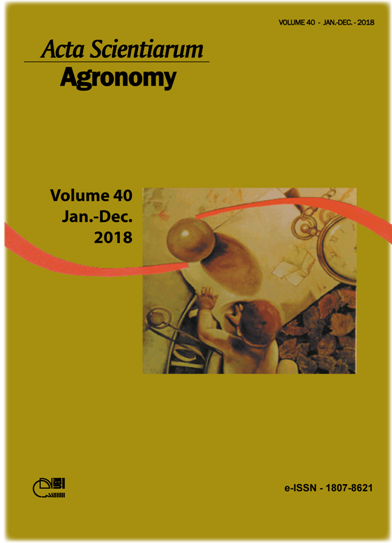<b>Germination and biochemical components of <i>Salvia hispanica</i> L. seeds at different salinity levels and temperatures
Abstract
Most plant species are susceptible to the effects of salinity, such as increases in osmotic potentials and deleterious ionic effects, which in turn affect water absorption in plants and, consequently, compromise germination and seedling growth. Hence, this study aimed to evaluate the effects of salinity on the germination, initial growth, and physiological and biochemical components of S. hispanica seedlings at different temperatures. The experimental design was completely randomized, with treatments distributed in a 5 x 4 factorial scheme with five saline concentrations (0.0 (control), 4.5, 9.0, 13.5, and 18.0 dS m-1) four temperature regimes (20, 25, 30, and 20-30°C), and four replicates of 50 seeds per treatment. The experiment evaluated the germination, growth, biochemical components (chlorophyll a, chlorophyll b, total carotenoids, amino acids, proline and sugars) and phytomass accumulation of S. hispanica seedlings. Saline levels higher than 4.5 dS m-1 together with treatment temperatures of 30 or 20-30°C negatively affected the germination, vigor, growth and biochemical components of the seedlings. The 25°C treatment temperature promoted the best conditions for the development of S. hispanica seedlings up to the saline level of 9.0 dS m-1.
Downloads
DECLARATION OF ORIGINALITY AND COPYRIGHTS
I Declare that current article is original and has not been submitted for publication, in part or in whole, to any other national or international journal.
The copyrights belong exclusively to the authors. Published content is licensed under Creative Commons Attribution 4.0 (CC BY 4.0) guidelines, which allows sharing (copy and distribution of the material in any medium or format) and adaptation (remix, transform, and build upon the material) for any purpose, even commercially, under the terms of attribution.




















































